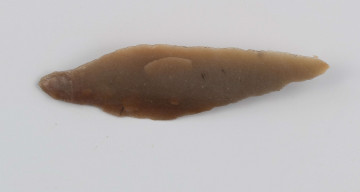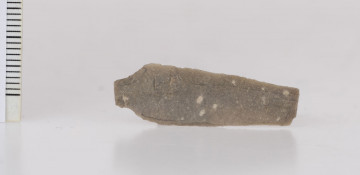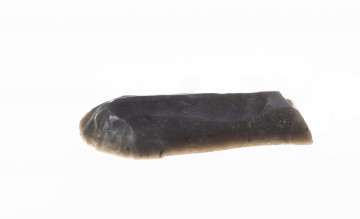
Tanged point
National Museum in Lublin
Part of the collection: Set of archaeological relics found in the Lublin Region
The relic was found in Jaszczów, Łęczyn district. It is one of the oldest relics in the collection of the National Museum in Lublin, as it was made about 10 thousand years ago by a representative of the Świder Culture existing at that time.
The name derives from the archaeological site in Świdry Wielkie, which is now part of the city of Otwock, where an encampment of our ancestors was discovered in pre-war times.
The communities of the Świder Culture were primarily reindeer hunters, and this incompletely preserved monument is closely connected with the way of life of the people of that time. It was with the help of such tanged points, used as a blade of bow arrows, that the animals were hunted.
The hunters followed the migrating reindeer, setting up small camps (often single or double huts) near the rivers. The construction of such huts (which resembled Indian tepees in appearance and functionality) was based on the skins of hunted animals, while warmth was provided by a fire placed inside.
Thanks to traseological research (which uses specialist microscopes to examine the traces of use left on the artefacts) we know that the flint tanged points were used primarily as arrowheads for bows and less frequently as a flint tool used in everyday household chores.
Author / creator
Dimensions
cały obiekt: height: 3,3 cm, width: 1 cm
Object type
tool
Technique
carving
Material
flint
Creation / finding place
Owner
The National Museum in Lublin
Identification number
Location / status

National Museum in Lublin

National Museum in Lublin

National Museum in Lublin
DISCOVER this TOPIC
National Museum in Lublin
DISCOVER this PATH
Educational path